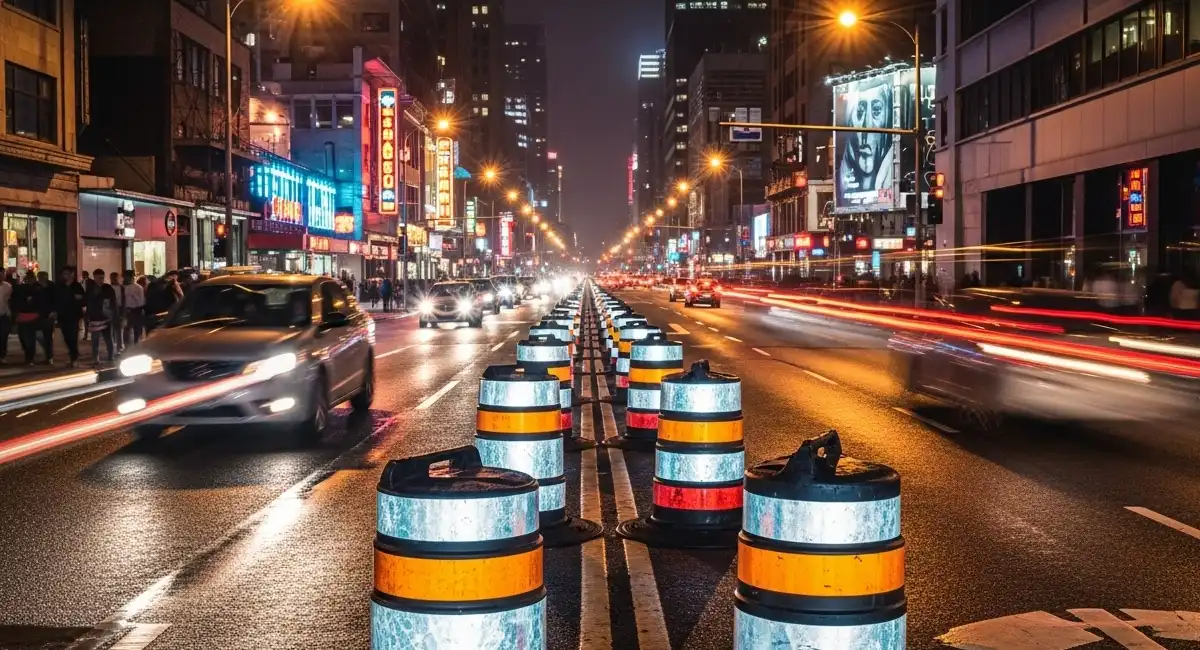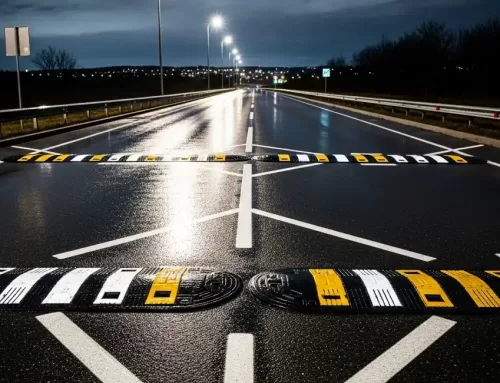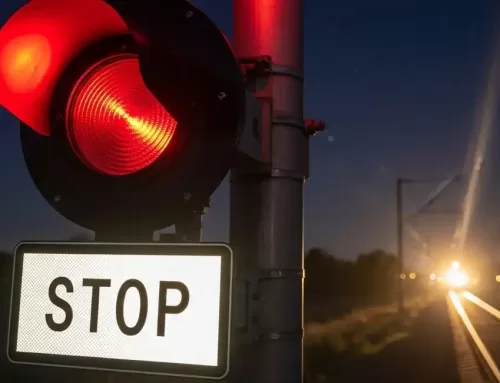Reflective film to protect people’s safety
Definition of reflective material:
Reflective material, also known as retroreflective material, is widely utilized in a variety of road traffic safety facilities.
It can be divided into traffic sign reflective materials, road marking reflective materials, raised road signs, contour signs, reflective materials for clothing, etc.
The realization of the retroreflective function of light is achieved through various reflective materials with retroreflective properties.
Most of these reflective materials are not naturally formed in nature, but rely on human creativity and are new substances invented and synthesized.
Retroreflective technology brings together multiple disciplines and technologies such as optics, materials science, mathematics, and organic chemistry.

Where are the reflective markers and reflective tapes in reflective materials?
The differences between the reflective markers and reflective tapes we see in our lives are as follows:
Reflective markers are mainly used to make various reflective signs, vehicle license plates, safety facilities, etc.
which play an obvious warning role with their bright colors during the day.
At night or in low light conditions, their bright reflective effect can effectively enhance people’s recognition ability, see the target clearly, and arouse vigilance, thereby avoiding accidents, reducing casualties, and reducing economic losses.
It has become an indispensable safety guard for road traffic and has obvious social benefits.
Reflective tapes, also known as preformed road reflective tapes, are a new type of reflective material made of a combination of high-molecular flexible polymers, pigments, and glass beads.
Reflective tapes are mainly used for road surface indications, such as zebra crossings, center double solid lines, lane dividing lines, text, arrows, etc.
Applicable to asphalt and cement.
It can be divided into: engineering reflective tapes, engineering anti-fouling tapes, temporary reflective tapes, and temporary anti-fouling tapes.
Uses: road signs; prohibition signs, warning signs, instruction signs, and signs used for ground advertising.
Lifespan: Depending on the road conditions, traffic volume, and installation conditions, the service life can be at least 2 years.
How are highly reflective glass beads produced?
1. First, melt the raw materials into a glass liquid at a very high temperature. The glass liquid passes through a special nozzle to form many mist droplets. These droplets automatically form regular spheres under the action of surface tension.
2. After cooling and certain treatment, very useful glass beads are obtained. Glass beads can be used to make many retro-reflective materials, such as reflective cloth, reflective film, reflective coatings, reflective inks, etc.
Application:
These materials are used in public security, transportation, fire protection, railways, coal mines, and other departments.
They can be seen in labor protection products and civil protection products.
Drivers driving at night are easily affected by the lights of opposite vehicles, roadside lights, high-rise searchlights, and advertising neon lights, which can easily cause traffic accidents.
The bright light emitted by the reflective sign under the illumination of the car lights is particularly eye-catching, which can remind the driver to pay attention to relevant road conditions and improve driving safety.
In weather with low visibility, such as rain, fog, wind, and sand, reflective materials can highlight their value.
Therefore, many developed countries require that reflective materials be used on road and railway traffic signs and on the front and rear of vehicles.
International marine lifesaving agencies also require that life-saving equipment be equipped with reflective materials to facilitate nighttime search and rescue work.





